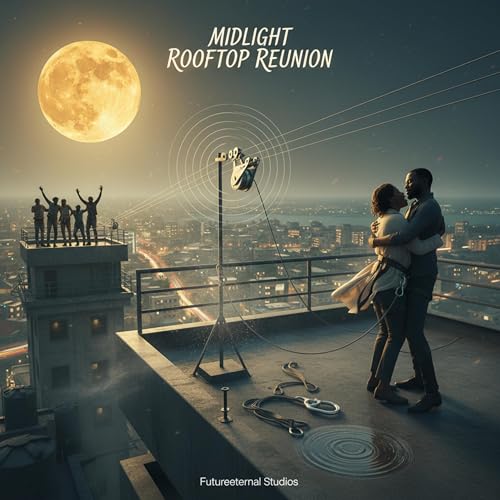The story shows the government's counterstrike beginning with jammers creating "wah-wah-wah" interference that threatens to destroy their analog broadcast. As specified in your prompt, Aṣàkẹ́ shouts strategic instructions to Káyòdé, who wraps foil paper around his drone propellers, creating "crinkle-crinkle-crinkle" sounds as the spinning foil reflects the jamming signals back at the government equipment.
The chapter builds tension as red-blue police lights begin flickering across Lagos rooftops, showing the authorities closing in on their location. The creative drone-foil technique temporarily overcomes the jamming, allowing their music to continue reaching the people.
Faced with limited time, they skip to their final song - the collective anthem representing their entire struggle. As this plays, something beautiful happens: people across Lagos begin turning on lights in rhythm with the music, transforming the city into a giant instrument of solidarity.
The climax comes when the rescued prisoners from Èkó Tower reach and destroy the jammer equipment, allowing their final song to broadcast clearly across Lagos just as government forces storm the building. This creates a bittersweet victory - their message gets through completely, but they're about to be captured.
The chapter ends with the realization that they've achieved their goal of spreading the music of resistance, even as enemy forces reach their door, setting up the final confrontation of their story.
 2025/09/197 分
2025/09/197 分 2025/09/188 分
2025/09/188 分 2025/09/178 分
2025/09/178 分 2025/09/168 分
2025/09/168 分 2025/09/157 分
2025/09/157 分 2025/09/148 分
2025/09/148 分 2025/09/136 分
2025/09/136 分 2025/09/127 分
2025/09/127 分
